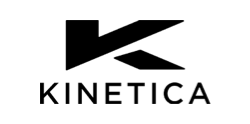With a return to training for many of our members this week, it’s the perfect time to make a plan to ensure that you are properly prepared. Although it’s something we have been eagerly waiting for, we have to be careful that we don’t just jump straight back in where we left off.
We want to make the most of our training, whilst making sure that we don’t overdo things; doing too much too quickly can lead to injury and compromise your immune system, neither of which you want.
Making sure that you are properly fuelled before training, and having a good recovery routine in place are key to helping you ease back in.
1. Energy Balance
As the amount or intensity of your training changes, so do your energy requirements. To make sure that you maintain energy balance, and avoid an energy deficit, you need to match what you consume to what your body uses during training and your normal daily activity.
Don’t rely on your appetite as a trigger to increase your calorie intake. Changes to your appetite can be delayed by a couple of days, but changes in your diet need to be made from the get go.
It has been shown that only three days of energy deficit (not taking in enough calories) can lead to disrupted menstrual function in females – an early warning signal for other negative effects on health. It also affects males, it’s just that there isn’t such an obvious warning signal.
For more information about the effects of energy deficit, click here.
2. Protein
Protein is important for muscle recovery and your immune system. Your body can’t store protein (any excess is excreted or stored as fat), so you need to top up regularly. Focus on making sure that you are consuming high-quality protein with every meal and snack.
High-quality proteins contain all of the essential amino acids, sources include meat, fish, eggs, dairy produce, quinoa, buckwheat, soy.
3. Recovery
For optimum refuelling, the magic window is 30-45 minutes after training. During this window your body is seeking protein and carbohydrate to rapidly repair your muscles and replenish your glycogen stores; outside of this window, your hormone levels change and your ability to do this so quickly is reduced.
This window is even more important on those days where you have a double training session, or a late evening session followed by an early morning session.
A good recovery option has a mix of protein (repair) and carbohydrates (replenish), along with liquid (rehydrate); chocolate milk fits this profile perfectly and has the added benefits of being easy to get hold of, cheap, and tasting great hot or cold.
4. Micronutrients
This doesn’t mean filling up on multi-vitamin supplements; if you have a balanced and varied diet, you won’t need them. Having a range of vegetables, fruit, wholegrains and dairy products in your daily diet will provide you with a range of vitamins and minerals as well as fibre and calcium.
If you don’t consume dairy products, it is important to check your calcium intake as it is not only vital for bone health, but also muscle contraction. Many milk alternatives fortify with calcium, but check the label to make sure.
Iron deficiency can be a concern for teen athletes, females, and those who consume a vegetarian or vegan diet. If you are concerned about your iron levels ask your GP for a test.
Vitamin D has been receiving a lot of attention again recently. It is well known that it can help your body to absorb calcium, which is needed for healthy bones as well as muscle contraction, but there is also evidence that supports its role in regulating cell growth, neuromuscular and immune function, and the reduction of inflammation. Our main source of vitamin D is through sun exposure, so if you don’t get much sun exposure (<30 minutes every day) consider taking a supplement of up to 25 µg per day.
For more information on vitamins and minerals, check out this link.
5. Anti-inflammatory Foods
Inflammation is caused by stressors such as exercise, an illness, or toxins such as cigarette smoke. Short bouts of inflammation can help us to stay healthy, however, chronic inflammation can have the opposite effect.
Inflammation is a natural part of the adaptation to exercise, but intense periods of training and competition can cause chronic inflammation, which can compromise your immune system and increase your risk of illness. Consuming anti-inflammatory foods can help reduce the impact of this inflammation and help you to recover quicker.
Anti-inflammatory foods include omega 3 fatty acids (found in oily fish), olive oil, nuts, green leafy vegetables, fruits such as apples, oranges, blueberries and strawberries. If you have an illness, these foods could help reduce inflammation and play a part in reducing the effects that an illness can have on you, but this does not mean that they provide you with any protection.
Final Word
Returning to training is probably something you have been looking forward to, but be cautious. After a break or a change in activity, what you would consider an intense session might have changed. Think about how you feel returning after an injury or the off-season; your training schedule will need to be adjusted, rather than just picking up where you left off.
Your main focus should be on making a healthy return. This might not mean being the fittest, the strongest or the fastest that you have ever been – instead, this means finding a balance between getting the most from your training while safeguarding your health and immune system.
If you choose to use supplements to help achieve your nutritional goals, make sure to use a brand that is trusted and batch tested. All Kinetica products are WADA compliant and Informed Sport tested, which means they contain exactly what is listed on their label.















